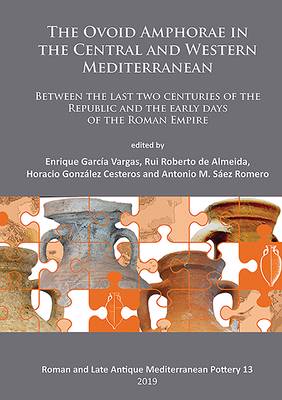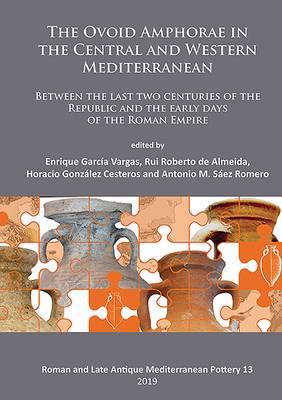
- Retrait gratuit dans votre magasin Club
- 7.000.000 titres dans notre catalogue
- Payer en toute sécurité
- Toujours un magasin près de chez vous
- Retrait gratuit dans votre magasin Club
- 7.000.0000 titres dans notre catalogue
- Payer en toute sécurité
- Toujours un magasin près de chez vous
The Ovoid Amphorae in the Central and Western Mediterranean
Between the Last Two Centuries of the Republic and the Early Days of the Roman Empire
87,95 €
+ 175 points
Description
The production of amphorae and the export of commodities transported in them was a key activity for the Mediterranean world in Antiquity. Consequently, their study is of enormous value for analysing the agricultural and fishing economy, and also the commercial mechanism of that period. Through the typological and chronological analysis of these ceramic containers, a high degree of knowledge has been achieved, especially for the production of the different Mediterranean societies from the second millennium BC to the Middle Ages. In The Ovoid Amphorae in the Central and Western Mediterranean between the last two centuries of the Republic and the early days of the Roman Empire, several series of amphorae created in the Late Republican Roman period (2nd and 1st centuries BC) have been studied - a group of material until now little studied. All of these groups of containers share a common feature in the shape of their bodies which is generally ovoid. The fact that they were conceived and developed in the economic and political context in which Rome expanded throughout the Mediterranean, transferring to its new territories its production and commercialization procedures, bears witness to the almost total integration of the Mediterranean markets. This publication is based on the proceedings of the workshop held at Seville University in December 2015. The book brings together contributions on the main production areas of these ovoid amphorae from the Atlantic to the Greek mainland / North Peloponnese, analysing in detail the origins, evolution and disappearance of their main series. It also includes case studies that are particularly relevant in relation to their distribution, consumption patterns, contents and relationship with other groups of amphorae manufactured in the Roman Imperial era. The aim of this publication has been to present an updated and complete synthesis of the so-called ovoid amphorae, from an interdisciplinary, international and diachronic standpoint.
Spécifications
Parties prenantes
- Editeur:
Contenu
- Nombre de pages :
- 430
- Langue:
- Anglais
- Collection :
Caractéristiques
- EAN:
- 9781789692969
- Date de parution :
- 19-09-19
- Format:
- Livre broché
- Format numérique:
- Trade paperback (VS)
- Dimensions :
- 208 mm x 297 mm
- Poids :
- 1428 g

Les avis
Nous publions uniquement les avis qui respectent les conditions requises. Consultez nos conditions pour les avis.





